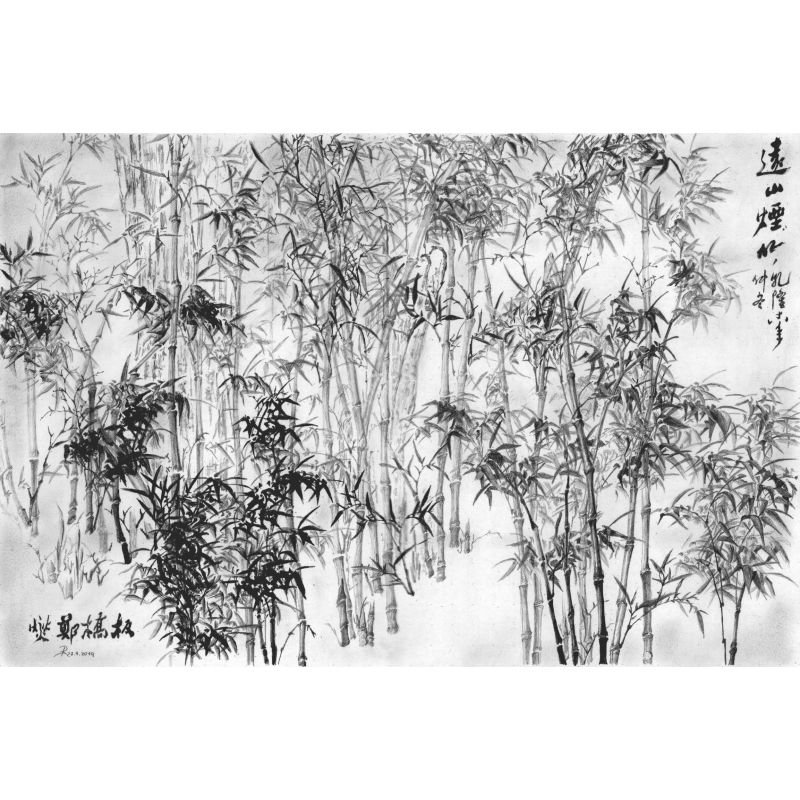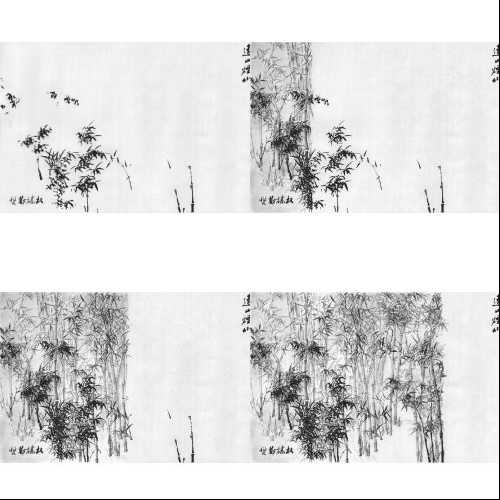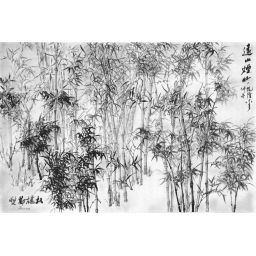Pencil drawing by PencilHB |
D E U T S C H | E N G L I S H |
Famous painting - Zheng Xie
|
Share this drawing |
|
|

April.27.2014 DIN-A3 16.5 x 11.7 inch
Description
Original painting
Artist | Zheng Xie (1693-1765) |
title | ' Misty Bamboo ' |
date | 1753 |
period | hard to tell, maybe Chinese Expressionism |
technology | ink on paper ( 4 rolls ) |
Dimensions | 4 * 179.1 x 68.3 cm, nearly 5 square meters (4 * 70,5 x26 , 9 in ) |
Location | The Metropolitan Museum of Art , New York |
Why do you paint that?
...
'Hmm ? - What , are you asking me? - How should I know that? - Ask Zheng Xie, he did it in the first place' 
...
No, it was surprisingly much fun, because these 'simple shapes' form an overgrown slope in a nearly three dimensional way.
Bamboo plays an important role in Chinese culture and was painted by many artists.
The unique plant has several properties:
Hollow 'trunk' | stands for tolerance and open-mindedness |
flexibility and stability | stands for human resilience without breaking |
(Bamboo is one of the ' three friends of winter ', presumably because it remains green almost during the whole winter)
On my search, the painting by Zheng Xie was the best bamboo painting because it looks very three dimensional and forms a large volume.
It was painted probably with an ink brush and the painter worked in several layers. In many places it gets clear, that leaves were simply painted over an existing content. This creates a fascinating translucent character. I cannot say how the original painting looks like form a very close view - perhaps this plasticity is produced only because of the size reduction of a very large painting.
The painter
Zheng Xie was originally a government official. Through actions and decisions, he improved the situation of the starving population, which did not make him popular within the ‘rich layer’.
When his energy faded by an ailing health, he withdrew and went to Yangzhou, where many artists were active.
There he was one of the 'Eight Eccentrics', a group that used their own expressionist style of painting and where known by their strong will 
Signature
I don’t know Chinese writing, so I copied the letters one by one. My assumption was, that the red stamps in the original-painting would form the signature and so I didn’t copy it.
Later I read, that the characters in the left lower corner form the signature and the stamps are just a ‘seal’.
It was not my intention to create something that looks like an illegal copy, so I placed my own signature clearly readable on the left side, below the Chinese Letters.
top
Steps
(this time I did not create a pre drawing because of the amount of small details)
1 Dark shading
2 Details (first part)
3 Details (second part)
4 Details (third part)

final drawing

Tools/Material
| Paper | normal printer-papier (DIN-A4...A6) normal sketchbook paper (DIN-A3) |
| Pencil HB | for pre drawing, fine lines, area-darkening and graphite-powder |
| Eraser | (2 x 2 x 0.6 cm) for area-lightening |
| Eraser | (small - at the end of a pencil) to smear graphite-powder |
| Sandpaper | to produce graphite-powder with the HB-pencil |
| Paper handkerchief | to smear graphite-powder or for blurring (wide areas) |
| Finger | to smear graphite-powder or for blurring (middle areas) |
| Pen with bicycle tube | to smear graphite-powder or for blurring (small areas) |
| Cardboard | to smear graphite-powder or for blurring (tiny areas) |
| Eraser-template | simple construction with a gap (1 x 30mm) |
| Eraser-template | simple construction with a gap (1 x 2mm) |
| Extra papers | to protect areas |
Version March.15.2015
Copyright (C) 2014 by SEA
Software-Entwicklung Aichinger